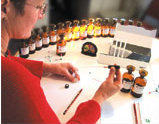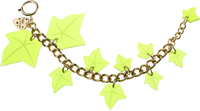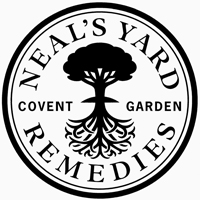
I am a bit of a perfume whore - I have over 30 on my dressing table - so when I heard about the perfume-making courses on offer at The Cotswold Perfumery I jumped at the chance.
Situated in the chocolate box village (literally, it's the stuff Christmas cards are made of) of Bourton on the Water, The Cotswold Perfumery was established in the 1960's by the father of John Stephen, the current owner and perfumer and leader of the one day perfumery courses, which he started running in 2003.
The Level One course began with an introduction to the theory behind perfume making and it's ingredients, which can vary hugely in price from a few pounds per kilo to the many thousands - the most expensive ingredient is Oud (at a staggering £20,000 per kilo) from the wood of a tree that grows only in Vietnam & Cambodia. True fact.
My inner geek relished the science side of the day - which was a lot. In our morning theory session John explained our sense of smell and how the brain and the nose work in harmony, as well as testing our noses to see which scents we could identify. A fragrance is made up of three levels: top notes are those which can be detected immediately the scent is sprayed. They are highly volatile - so evaporate quickly - and have a low tenacity, so they aren't particularly long-lasting. Mid notes are those which develop after a short period of time, generally florals. Base notes are the heavier, long-lasting notes that develop after a few hours and stay around for the longest time. In contrast to the top notes, these have a low volatility and therefor a high tenacity.
After a tour of the scented garden and a morning coffee, we looked into different categories that finished perfumes are grouped into: Green fragrances are typically fresh and clean, scents such as grass and cucumber. These, as well as citrus scents, tend to be very top note-heavy, with very few - if any - base notes, classic examples are 4711 and CK One. Oriental scents are the heady, long-lasting, powerful fragrances like Dior's Poison, full of base notes. Florals are pretty much self-explanatory; jasmine, rose and lavender are the most popular. Then we have the Chypre fragrances, originally brought back to France from Cyprus - hence the name - the chypre scents are woody, evening-type fragrances.
We then moved on to the lab, which is where the real fun started! John tested our noses to see how much we had picked up from the morning's theory, giving us a sample of a scent and asking us to identify its profile from what we could smell. I managed to pick up a floral scent, mixed in with a slightly plant-like tang and a bit of mintiness (very technical terms...). Turns out I was half right - the sample was geranium oil, described as 'a powerful green, leafy-rosy, with a pronounced fruity-minty undertone and a rich, long-lasting, sweet-rosy dryout'. John took us through all of the ingredients we could use to create our scents, ranging from the familiar such as rose, orange blossom and sandalwood to the less well-known... like civet, the...ahem...fecal secretion of the civet cat which literally smells like poo. Not to sure where that would be used but each to their own...
For lunch we decamped across the round to the picturesque Dial House Hotel, for a delicious feast. I chose a caramelised onion and goat's cheese tart, followed by a sticky toffee pudding, all of which was included in the cost of the day.
Upon returning to the lab, we began to create our perfume, having decided whether we wanted to create a citrus or chypre based fragrance. I studied A Level Chemistry at school, so setting to work mixing all the fragrances and creating my own scent brought my love of it flooding back! Beginning with base notes and then following on with mid and top, a sample was created in a mini vial, each drop carefully recorded so we had a precise recipe to follow later when we created our 25ml bottle to take home. After a couple of duff samples, I perfected my recipe. I love rose-based scents (Stella McCartney is one of my favourites), so my perfume has base notes of sandalwood and vanilla, followed by rose and jasmine, with a little bit of lemon oil to keep it fresh. I also include a few drops of hedione, though not particularly scented itself, it works to bring out and enhance middle notes, particularly florals.
I was seriously impressed that I managed to create a real perfume in just one short day. The course was a fascinating insight into the world of perfume-making, I learnt so much I couldn't possibly fit it all into a blog or I would be here all night. I would definitely recommend it to anyone who's a scent-a-holic! For more information about The Cotswold Perfumery and its courses visit www.cotswold-perfumery.co.uk
Love Laurel x


